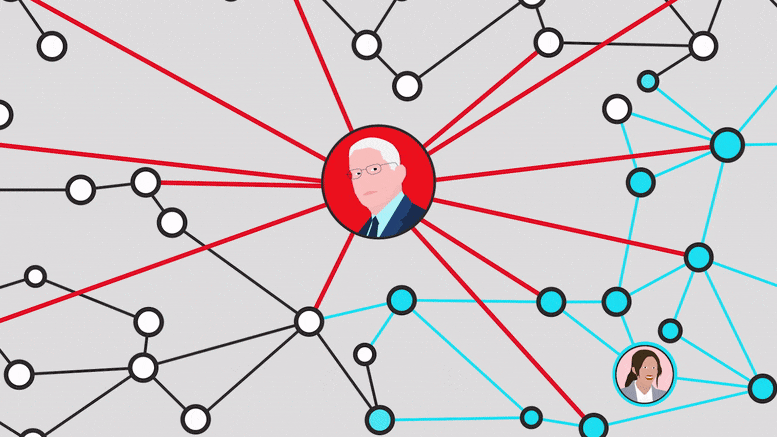It’s important for all of us to make a significant impact on business results and achieve the goals we have set. But our success depends not only on ourselves, but also on others, and all this takes place in a multidimensional, complex environment. Experienced strategic HR leaders know how to build their business influence, who to influence, when, and what strategy and tactics to use. What is strategic influencing? What factors influence business? How can you demonstrate and develop your strategic influence in HR practice on a daily basis?
Welcome to the final part of the How to become a strategic HR leader series.

Call to action
As the first part of this series showed, strategic thinking enables us to understand the complex relationship between our organization and its environment, and to use this knowledge to make decisions that will facilitate the sustainable business success of our organization. The second part of the series showed that strategic action – i.e. articulating strategic priorities in feasible action plans and effectively executing those plans – is essential for the implementation of a business strategy.
The third key element of strategic leadership is strategic influencing. What does it mean? Strategic influencing is the ability to make others take action to achieve our own goals. In the process of influencing, we have an impact on and change the behavior, attitudes, opinions, and decisions of the other person(s). Strategic influence measures not our popularity, but our credibility, authority, reputation, and ability to engage and inspire others.
Multidimensional, complex environment
There are certain influencing factors that fundamentally determine the sustainable operation and success of a business. External influences are factors over which businesses have little or no control: economic, financial, geographical, social, legal, political, institutional, technological, competitive and market influences. Internal influences are factors over which businesses have some control: these are product, location, management, resource management (including human resources) and business culture influences.
In achieving your objectives, you as an HR leader are directly and/or indirectly influenced by the above-mentioned external and internal influencing factors.
Influencing strategies
As John C. Maxwell aptly put it „Leadership is influence – nothing more, nothing less.“ Influencing is therefore not only a skill but also one of the most important leadership skills in the fundamental toolbox of HR leaders. Influential leaders are true to themselves: they are aware of their own strengths and their preferences based on those. They are also aware of when and why a less preferred influencing strategy should be used credibly.
Do you want to gain strategic influence that will help you achieve your goals and consolidate your credibility and authority as an HR leader?
Let’s look at some influencing strategies and how you can demonstrate them on a daily basis!
Common vision: Make yourself and your team visible. Show others those ideas, initiatives, and achievements of yours that support the company’s vision. Think about it when you contribute to business growth and customer satisfaction through the selection of the right professional, the development of a sales competency model and career path.
Logical persuasion: Use logical arguments and factual evidence to convince someone of the relevance of your opinion, suggestion, or request. Data-driven information and recommendations can greatly improve the speed and certainty of business decisions. Just think of consideration of the purchase and implementation of HR software to support HR operational efficiency.
Favorable agreement: Ensure that the needs of all stakeholders concerned are met. Just think of wage negotiations with the Works Council or with candidates, or the introduction of remote work at the company. You can also think about sharing resources or making compromises.

Involvement and empowerment: Involve others in an HR strategic activity (e.g. product/service development, project) and related decision making, where you need the expertise, support and help of stakeholders. Think of a situation where you invite colleagues from other areas of business to help you plan the onboarding or employee experience process, ask for their views, and build on their ideas and suggestions to improve the quality of the process.
Building relationships and trust: Consciously build and maintain your network (communicate regularly) to ensure the long-term support you need to achieve your goals. Learn about your organization’s formal and informal structure, key people, decision paths and organizational politics. Liaise with external professional (HR) and industry networks. You can think of exchanging small favors, sharing knowledge, or introducing people to each other.
Inspiration and commitment: Connect your purpose or interest with the personal values, goals, and aspirations of others. Nowadays, many companies are undergoing transformations and employee engagement is essential to make these happen. “One pharmaceutical company has shown its employees why they need to be more innovative: In doing so, you will help us keep more people healthy so that they can spend more time with their families.”
In addition, important elements such as listening (first understand others‘ perspectives, then influence), body language, tone of speech, and business and functional expertise also play a role in the effectiveness of influencing.
When influencing others, remember that context matters. The goal is to influence, not manipulate others. People can be influenced by force and blackmail, but these are short-range solutions – people will stand by you not because of their own beliefs but because of their fear of the consequences.
Developing of strategic influencing
If you want to (further) develop your strategic influence, practice!
Find business areas and topics that are related to your goals and where you want to be more confident.
Think about the key stakeholders or teams whose support you need the most or who you wish to influence more effectively than before (e.g., line manager, co-leaders, external/internal stakeholders, subordinates, colleagues). Find out about the situation of the people concerned.
Once you have that, you can start planning how you will build relationships and communicate with them: what level of communication you will need with different people, how often you will need to contact them to maintain momentum, and what approaches or channels you will use.
For each person or team, answer the following questions:
- Who do I want to influence? What are his interests, attitudes, goals, opinions, expectations?
- What outcome do I want? (support, agreement, involvement, etc.)
- Which influence strategy (or strategies) am I currently using?
- What results have I had so far (what works well, what could be better)?
- Which influence strategy (or strategies) do I plan to experiment with?
- How do I believe this approach will help?
- What specific actions will I take? What resources or support do I need?
- What potential obstacles do I face? How do I plan to overcome these obstacles?
- How will I know my new approach is working? Who can I ask for feedback?
By being able to exert strategic influence, you’ll have a decisive impact on business results and the ability to achieve your goals.
Inspirations: How to increase your influence at work by Rebecca Knight, Influence Strategies Exercise by Leaders for Growth and Korn Ferry


